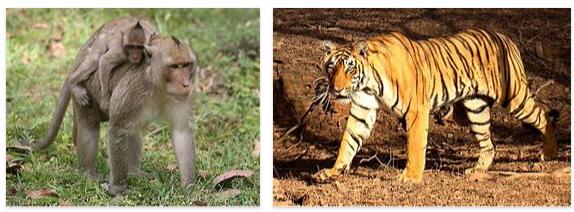Cambodia Country Overview
(Preǎhréachéanachâkr Kâmpǔchéa). State of Southeast Asia (181,035 km²). Capital: Phnom Penh. Administrative division: provinces (20), municipalities (4). Population: 16.069.921 residents (2018 estimate). Language: Khmer (official), French. Religion: Buddhists 93%, Muslims 4%, Christians 2% others 1%. Monetary unit: riel (100 sen). Human Development Index: 0.582 (146th place). Borders: Laos (N), Thailand (N and W), Viet Nam… Read More »




